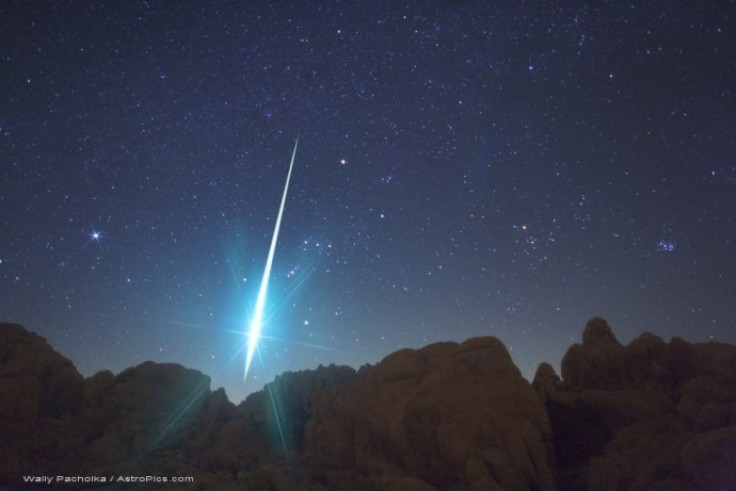Geminid Meteor Shower: Where to Watch Excellent Sky Views Online [VIDEO]

The Geminid meteor shower peaks Tuesday night and is not one to be missed because it is the last, big meteor shower of 2011.
Stargazers can see the shower peak between late Tuesday night and early Wednesday morning with the best view happening after 10 p.m.
There was a full moon on Dec. 10 and NASA has said that its bright light may hamper viewing abilities. But even with much bright light from the old moon, NASA has said viewers can still expect to see up to 40 per hour if skies are clear.
The space agency also said that Geminids were first reported in the 1830's with rates of about 20 per hour. Those rates have increased over the years to between 80 and 120 per hour at its peak on a clear evening.
Geminids are fairly young in comparison to Perseids or Leonids. Geminids seems to come from a point in Gemini.
NASA describes Geminids as pieces of debris from an object called 3200 Phaethon, which is still somewhat a mystery to scientists. The brightness of the Phaethon display increases to that of a comet when it is closely approaching the sun.
In addition to the video posted below, stargazers who want to watch the Geminids brighten the sky on Tuesday can see some excellent sky views from the Web sites below.
› Sandia Sentinel Fireball Camera Network, El Paso, Texas (NMSU All Sky Camera Network)
› Sandia Sentinel Fireball Camera Network, Hawley, Texas
› Oak Grove Observatory, Prairieville, La.
› New Mexico Skies Observatories, Mayhill, N.M.
› MMTO Sky Camera, Tuscon, Ariz.
› Twin Pines Observatory, Belmont, Calif.
› Lick Observatory All-Sky Camera, Mount Hamilton, Calif.
› Meadow View Observatory, Chico, Calif.
› Shane Observatory AllSky Camera, Prince George BC, Canada
› RASC Prince George Centre AllSky Camera, Prince George BC, Canada
© Copyright IBTimes 2024. All rights reserved.












